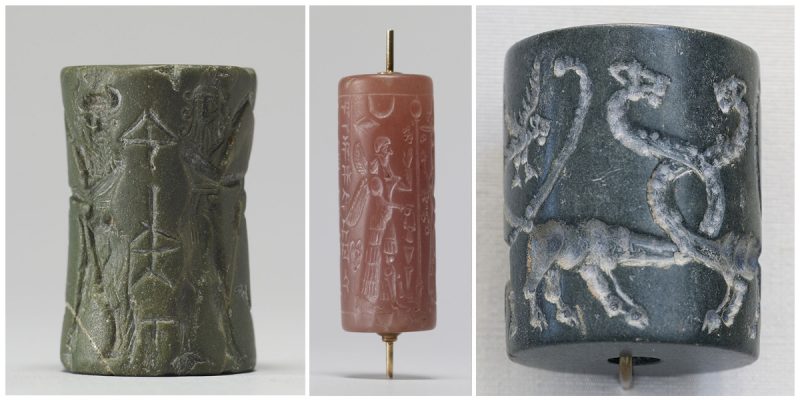One of the most fascinating objects discovered in ancient Mesopotamia is the cylinder seal. This small object was about one inch in length and it was used as an administrative tool or a form of personal signature. It was also used as a magical amulet and worn as jewelry because of its beautifully engraved surface, depicting different mythological or religious scenes or quotes.
Today, many cylinder seals can be seen in different museums around the world, where visitors can learn about their role in Mesopotamian daily life. The first use of the seals is linked with the invention of the cuneiform, and they were known as kishib (in Sumerian language) and kunukku (in Akkadian language). According to some historians, the seals originated in Sumer, but most date their origin to the Late Neolithic Period (c. 7600-6000 BCE) in the region that today is known as Syria. They were used by everyone from slaves to royalty, and when their signature was required, they would take them out from their necklaces, or pockets, or bracelets to be rolled on the clay document.
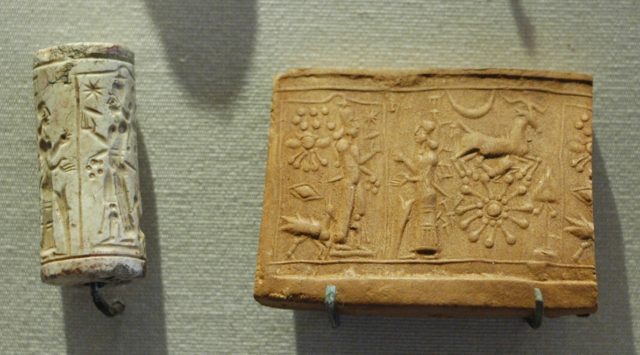
Typically they were made from hardstones, and some of them were made from different engraved gems. The many varieties of materials include lapis lazuli, hematite, carnelian, obsidian, amethyst, and steatite. Most of the seals used in Mesopotamia formed an image through depressions made on the surface, and some of them used raised areas on the round form.
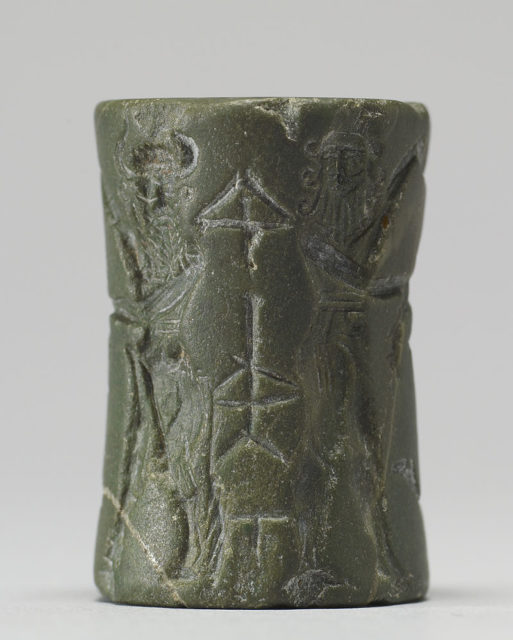
Seals were often used on wet clay, and some later ones were used to print various images on cloth and other two-dimensional surfaces. Each person’s seal was a precious possession, and if that person lost their signature, it was taken very seriously. The identity of each citizen was engraved on these objects, and they became anxious if they lost them. After the object had been found, the owner had to record the time when the seal was lost and found with a city official.
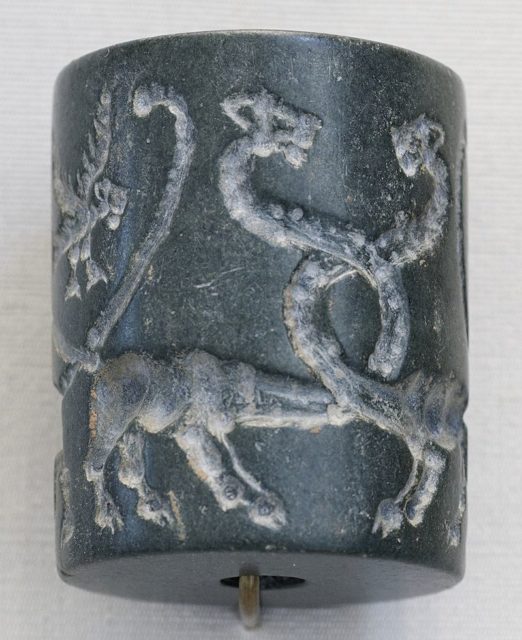
For this reason, many archaeologists have discovered them in graves among the precious and honorific personal items of the dead, such as gemstones, gold, and silver. The purchaser chose the seal and then it was given to the engraver with private instruction on what should be engraved on their surface. Some of them were clear in their meaning because they had great deities carved or traditional stories, but many of them were with hidden and less precise meaning known only to the person that owned it.
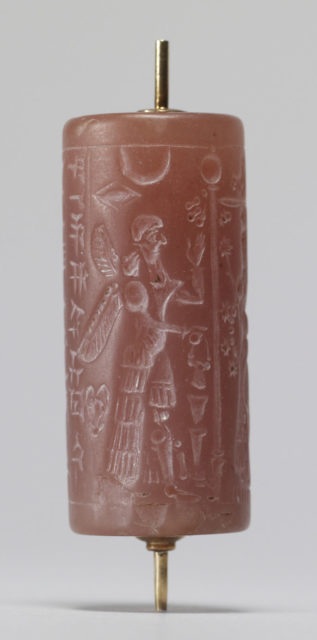
The items are part of the category of impression seal, which includes the finger ring seal, and the stamp seal. A lot of these objects are discovered throughout the centuries, and they are most important as art. Many scholars are debating about which object came first, was it the cylinder seal or the stamp seal?
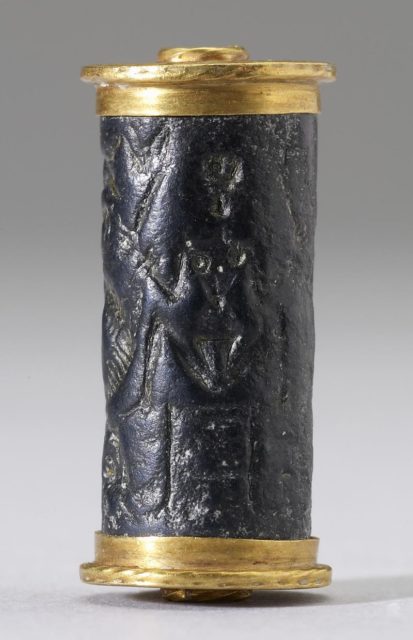
Much time has been dedicated to studying the thematic nature of cylinder seals, which give us information about the ancient society. The engraved scenes show us intimate details of daily life, such as what the people wore and the animals that they kept, how their buildings looked, and which gods they worshiped.
For art historians, each of them is a time capsule of the styles and motifs used during the lifetime of the owner. They offer valuable information about the development of the artistic styles in the Ancient Near East.
